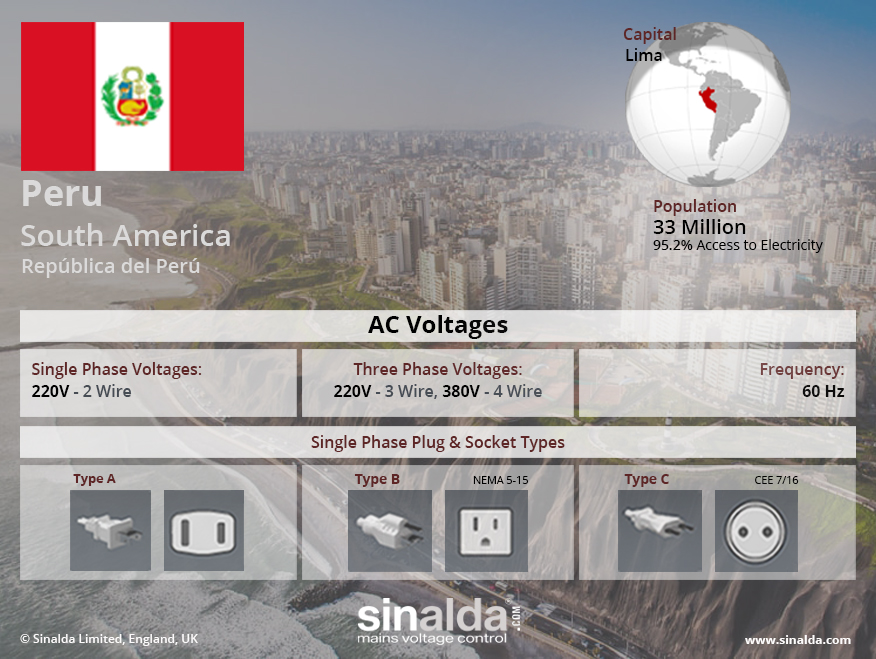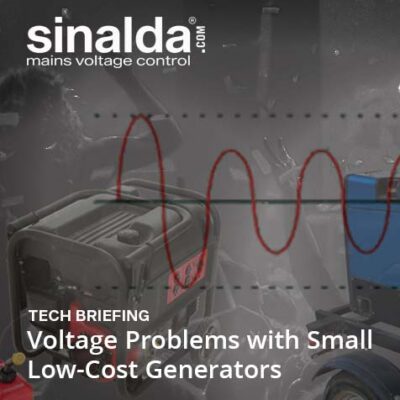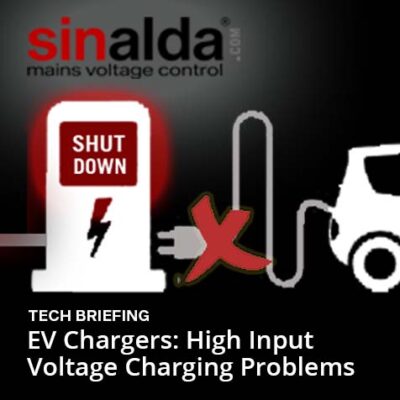Last Updated: 01 November 2021

Copyright 2021 Sinalda. Permission to use this image is granted subject to appropriate credit being given to www.sinalda.com as the source.
Power Quality in Peru
Peru is a country located in western South America that has made significant progress in recent years in improving the state and reliability of its electricity supply network. Power outages and brownouts are less common than they were in the past, however they do occur in times of high demand and adverse weather conditions which affect hydroelectric generation.
Power Sector in Peru
Peru’s electricity supply network is primarily managed and operated by the state-owned company, Electroperu. The country has a diverse mix of energy sources, with hydroelectric power being the largest source of electricity, followed by natural gas and thermal power. Renewable energy sources, such as solar and wind power, are also being increasingly utilised in the country.
The reliability of the electricity supply network in Peru has improved significantly in recent years, although there are still some challenges that the country faces. The country has a relatively low rate of power outages, with an average outage time of around 5 hours per year. However, some rural areas still experience regular power outages and brownouts due to inadequate grid infrastructure.
One of the main challenges that Peru faces in ensuring a reliable electricity supply is the variability of its hydroelectric power generation. During periods of low rainfall, hydroelectric power generation can be significantly reduced, leading to an increased reliance on other energy sources. This can result in higher electricity costs and greater vulnerability to price fluctuations in natural gas and oil markets.
The government of Peru has made significant investments in recent years to improve the state and reliability of its electricity supply network. This includes expanding the transmission and distribution network, increasing the use of renewable energy sources, and improving the efficiency of power plants.
In addition, the government has implemented policies to encourage private investment in the electricity sector, which has led to the construction of new power plants and the modernisation of existing ones. The government has also introduced subsidies to promote the use of renewable energy sources, which has helped to increase their share in the country’s energy mix.
Conclusion
In conclusion, while there are still challenges to be overcome, the electricity supply network in Peru has improved significantly in recent years. The country has a diverse mix of energy sources, with a growing focus on renewable energy, and has made significant investments in expanding and modernising its grid infrastructure.
Despite this progress, some rural areas still experience regular power outages, and the variability of hydroelectric power generation remains a challenge. However, the government’s commitment to improving the electricity supply network, coupled with private investment in the sector, provides reason to be optimistic about the future reliability and stability of the electricity supply in Peru.
Share your Views and Experiences
Every reasonable effort is made to ensure that the information provided above is accurate. No guarantees for the accuracy of the information is made.
So we are able to keep the content updated, and actual on the ground experiences can be shared with others, please feel free to contact us.







